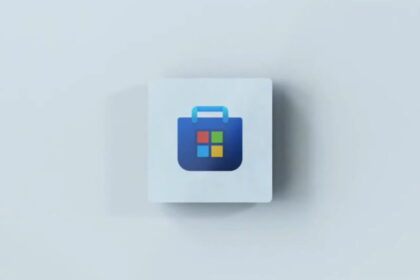Microsoft has officially retired its classic Mail and Calendar apps on Windows and replaced them with a redesigned, feature-rich version of Outlook—a move that represents a major step in the company’s strategy to unify its productivity tools under a single brand: One Outlook.
This updated Outlook app is now the default email client on Windows 11 and Windows 10, fully integrated into the operating system, replacing the standalone Mail and Calendar apps that many users have grown accustomed to.
Under the “One Outlook” initiative, Microsoft is aiming to create a consistent user experience across all platforms—web, desktop, and mobile. This new Outlook app is built using web technologies, closely resembling the Outlook on the web experience, and introduces full integration with Microsoft 365 services.
Whether you’re accessing your inbox via Windows, your browser, or your phone, Outlook will now offer a unified interface, synchronized settings, and cross-platform consistency.
Check out the video to see the new Outlook desktop program in action. It may take time to grow on us, but Microsoft is all in on making Outlook your one-stop for productivity across devices.
New Outlook vs Old Mail and Calendar Apps: Key Comparisons
| Feature | New Outlook (2025) | Old Mail & Calendar Apps |
|---|---|---|
| Design & Interface | Clean, modern UI aligned with Windows 11; customizable themes | Simplified interface with limited theme options |
| Cross-platform Sync | Seamless integration with web/mobile Outlook | No direct sync with Outlook Web or Mobile |
| Third-party Integration | Built-in access to OneDrive, Teams, To Do, Skype, Bing | Minimal Microsoft ecosystem integration |
| Performance | Faster and more stable; uses Exchange & web technologies | Lightweight but slower with larger mailboxes |
| Search & Filtering | Context-aware smart search, filter, and sorting options | Basic search and manual filtering |
| Offline Support | Limited; depends heavily on cloud and online access | Better offline performance |
| Customization | Minimal rules, limited layout options | More flexible with rules and notifications |
| Security & Privacy | Strong cloud-based encryption; no ads; GDPR-compliant | Basic encryption, occasional syncing issues |
| Supported Accounts | Microsoft, Gmail, Yahoo, iCloud (IMAP/SMTP with quirks) | More forgiving with POP/IMAP services |
| Calendar & Tasks | Unified interface with Microsoft To Do and Outlook Calendar | Separate app for calendar; no task management |
The transition to the new Outlook brings both advantages and disadvantages for users, along with certain risks assumed by Microsoft with this decision. Let’s break down these aspects:
Advantages of the new Outlook

The new Outlook brings several advantages over the old version, enhancing design and functionality. Some key advantages include:
- Modern and Minimalist Design: The new Outlook features a cleaner and simpler interface, aligning with the aesthetics of Windows 11. Its customizable themes, colors, font sizes, and dark mode option improve readability and email management.
- Enhanced Integration with Microsoft Services: Users can easily access various Microsoft services like OneDrive, Skype, Microsoft Teams, Office, and Bing directly from the Outlook sidebar or within emails. This integration fosters collaboration and seamless data synchronization across devices and platforms.
- Improved User Experience: The new Outlook offers a smoother, faster, and more stable user experience than its predecessor. It introduces features such as smart search, which provides relevant results based on context, a reading panel for previewing email content without opening it, and quick response options for efficient email management.
- Heightened Security and Privacy: Built on the Exchange ActiveSync protocol, the new Outlook prioritizes data encryption and safeguards against potential cyber threats. It also respects user privacy settings by refraining from displaying ads or collecting personal data, thus enhancing security and privacy measures.

These advantages contribute to a more efficient and secure email management experience, empowering users with enhanced productivity and peace of mind regarding their data privacy and security.
Disadvantages of the new Outlook
While the new Outlook offers numerous benefits, it also comes with some drawbacks that may pose challenges for specific users:
- Less Compatibility with Other Email Services: Despite its compatibility with most email accounts, the new Outlook may exhibit erratic behavior, potentially leading to compatibility issues with certain email services or platforms.
- Reduced Customization and Configuration Options: Unlike its predecessor, the new Outlook prioritizes simplicity and uniformity over extensive customization and configuration options. Users may be unable to modify certain aspects of their email experience, such as rules, notifications, or filters, which were customizable in the old version.
- Greater Dependence on the Internet: The new Outlook relies heavily on cloud-based infrastructure and the Fluid Framework, resulting in a heightened dependency on a stable and quality Internet connection.
- Users may encounter difficulties accessing emails and data if they experience internet connectivity issues or interruptions. Additionally, the new Outlook’s functionality may be compromised or disrupted without a reliable internet connection.
These drawbacks highlight potential limitations and considerations that users should be aware of when transitioning to the new Outlook.
While it offers modern features and enhanced usability, users should assess whether compatibility, customization, and internet dependency trade-offs align with their specific needs and preferences.
Risks of the new Outlook
Microsoft’s decision to launch the new Outlook carries several risks that could impact its image and market share:
- Loss of Loyal Users: Microsoft risks losing users who are loyal to the old Outlook and may not agree with or prefer alternatives. These users might uninstall the new Outlook in favor of other email applications like Thunderbird, Mailbird, or webmail services.
- Increased Competition: Microsoft faces competition from other email services such as Gmail, Yahoo Mail, or ProtonMail, which may offer better features or innovation. Competitors could capitalize on Microsoft’s change to attract new users or retain existing ones, potentially affecting Microsoft’s market share.
- Criticism for Lack of Transparency and Options: Microsoft may face criticism for its lack of transparency and options in launching the new Outlook. Some users might feel misled or upset by the abrupt replacement of the old Outlook without warning or choice. However, the new Outlook’s attentiveness to user actions and sharing may mitigate some concerns.
- Security and Privacy Concerns: The new Outlook’s cloud-based and Fluid Framework foundation may raise security and privacy concerns among users. Some users may question the security of their data stored in the cloud or the privacy implications of the Fluid Framework architecture.
Microsoft’s decision to launch the new Outlook involves navigating potential challenges and risks related to user loyalty, competition, transparency, and security.
Addressing these concerns will be critical for maintaining user trust and sustaining Microsoft’s market position in the email service landscape.
The introduction of the new Outlook reflects Microsoft’s dedication to integrating and streamlining its productivity services, aiming to provide users with a modern and simplified email experience. However, this transition has challenges and potential drawbacks, which could impact user satisfaction and loyalty.












What a POS it is. You copy text from within an email and paste it elsewhere within the same email, and all the formatting is different.
Now I have to go learn new work arounds for the bugs and stupidity that Microsoft encoded into it?
Microsoft again shows us the users that they never learn to make anything better. They only change it for the worse.